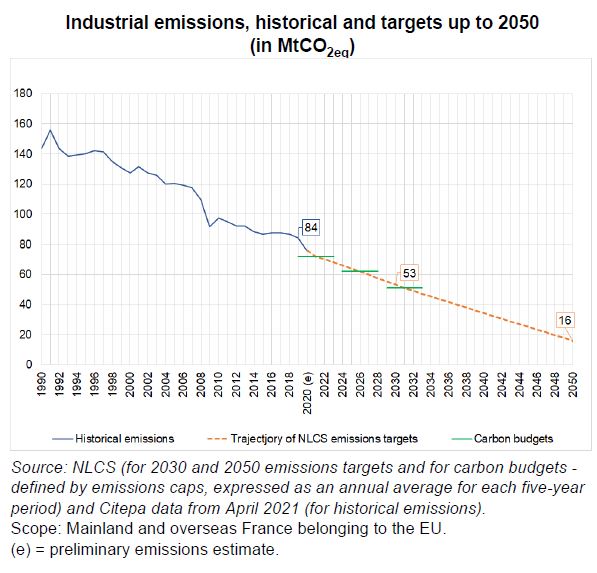Decarbonising Industry in France
Industry accounts for almost 20% of national greenhouse gas emissions, mainly driven by chemicals, non-metallic minerals and metallurgy. Since 2000, the decline in industrial emissions has been driven by improvements in the carbon efficiency of production. The probability of making decarbonisation investments increases with the size of the company, its productivity, its carbon energy consumption and its membership of the European carbon market.
France's National Low-Carbon Strategy (NLCS), adopted in March 2020, set target caps for industrial greenhouse gas (GHG) emissions of 53 MtCO2eq in 2030 and 16 MtCO2eq in 2050, compared to 84 MtCO2eq in 2019. A number of tools, including carbon pricing and public support for decarbonisation, are being used to meet these targets.
Since 1990, industry has been the sector of the economy making most progress towards decarbonisation. But continuing to decarbonise at the same pace as between 2013 and 2019 would not be enough to achieve the current NLCS targets – which are to be made even more ambitious to meet the revised GHG reduction target set at European level. In 2019, industry was responsible for nearly one-fifth of France's GHG emissions, led by the chemicals, non-metallic minerals and metallurgy sectors.
Since 2000, the reduction in France's industrial GHG emissions has been exclusively due to technical advances embedded in investments aiming at reducing pollution and enhancing manufacturing processes (improving their "carbon efficiency"). At the same time, industrial value-added has continued to trend upward.
Econometric analysis of firm-level data between 2013 and 2018 shows that the likelihood of a firm investing in decarbonisation increases with its size, its productivity, its consumption of carbon-based energy (gas, petroleum products, coal) and whether it is included in the European Union Emissions Trading System (EU ETS). After these factors are accounted for, the firms investing most in decarbonisation are not those in the highest-emitting sectors (chemicals, non-metallic minerals and metallurgy), which, in addition to being big energy consumers, use the fuels and industrial processes that release the most GHG emissions.
